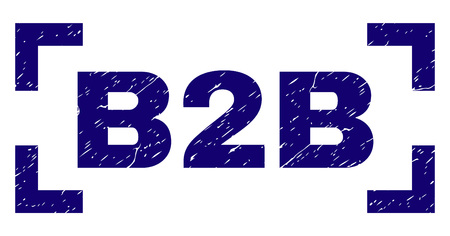Historical Foundations of the Druid Tradition
The origins of the druidic tradition in Britain trace back to the pre-Roman era, when Celtic societies flourished across the British Isles. Druids held a distinctive and highly respected position within these communities, serving as spiritual leaders, educators, judges, and keepers of oral knowledge. Their influence extended beyond religious rites, permeating the social and legal fabric of ancient British tribes. The earliest references to druids are found in classical sources from Greek and Roman writers such as Julius Caesar, who depicted them as arbiters of tribal disputes and intermediaries between the people and their deities. While much of druidic lore was transmitted orally—resulting in limited direct archaeological evidence—their socio-cultural significance is evident through both historical accounts and enduring folklore. Over time, druidic practices became deeply intertwined with seasonal rituals and the cyclical patterns of nature, reflecting a worldview attuned to the rhythms of the land. This foundational role set the stage for the druids enduring association with prognostication and ceremonial observance throughout British history.
Seasonal Celebrations in the British Isles
The cultural landscape of the British Isles is deeply shaped by its ancient seasonal festivals, many of which are rooted in pre-Christian traditions and continue to hold significance today. Central to these observances are the Druids, whose ritual roles and prognosticative insights have long influenced the rhythm of the agricultural year and community life. Four key festivals—Beltane, Samhain, Imbolc, and Lughnasadh—stand out as cornerstones of the seasonal calendar, each marking a pivotal moment in nature’s cycle and providing structure for both communal celebration and divinatory practices.
Overview of Major Seasonal Festivals
| Festival | Date | Main Themes | Druidic Significance |
|---|---|---|---|
| Beltane | 1st May | Fertility, Fire, Renewal | Lighting of bonfires for purification; rituals predicting agricultural success. |
| Samhain | 31st October – 1st November | End of Harvest, Ancestral Veneration | Mediating between worlds; foretelling the fortunes of the coming year. |
| Imbolc | 1st February | Emergence of Spring, Purification | Ceremonies invoking Brigid; auguries regarding weather and livestock health. |
| Lughnasadh | 1st August | First Harvest, Community Gathering | Offerings to deities; assessments of crop yield and social harmony. |
Beltane: The Festival of Fire and Fertility
Beltane heralds the arrival of summer, celebrated with vibrant fire festivals on hilltops across Britain. Historically, Druids presided over these gatherings, leading rites intended to cleanse participants and ensure fertility for crops and livestock. Prognostication was woven into these rituals through interpreting omens in fire and smoke patterns—a practice that endures in some rural communities today.
Samhain: Gateway to Winter and Ancestral Realms
Samhain marks the threshold between harvest’s end and winter’s onset. In Druidic tradition, it is a liminal period when the veil between worlds is thinnest. Druids conducted ceremonies honouring ancestors and sought visions concerning the future through scrying or casting lots. Many customs associated with Samhain have influenced modern Halloween celebrations in Britain.
Imbolc & Lughnasadh: Markers of Transition and Abundance
Imbolc signals the first stirrings of spring, dedicated to Brigid, a deity revered by Druids for her association with healing and inspiration. Rituals often focused on purifying land and homes while divining weather patterns critical for farming decisions. Lughnasadh celebrates the first fruits of harvest with communal feasting and games; Druids offered thanks to deities and interpreted signs from nature to predict the prosperity of the coming season. Together, these festivals illustrate how Druidic traditions underpin many enduring aspects of British seasonal celebrations, highlighting their adaptive relevance within local culture.

3. Druids as Ritual Leaders
Within the tapestry of British seasonal rituals, druids have historically assumed the pivotal role of ritual leaders, orchestrating and guiding ceremonies that mark the cyclical changes in nature. Their leadership extends far beyond simple organisation; it is rooted in a profound understanding of the spiritual significance embedded within each seasonal transition. Druids have long been associated with the sacred landscapes of Britain, most notably Stonehenge and Avebury, where they are believed to have conducted intricate rites aligned with astronomical events such as solstices and equinoxes.
The Orchestration of Seasonal Ceremonies
Druidic leadership was characterised by meticulous planning and a deep reverence for natural cycles. These ritual leaders would determine the appropriate timing for ceremonies, ensuring alignment with lunar or solar events—a practice still echoed today in contemporary druid gatherings. By invoking blessings, reciting traditional lore, and leading processions or communal activities, druids fostered a sense of unity and continuity within their communities.
Sacred Sites as Ritual Focal Points
The selection and sanctification of ritual sites formed a central component of druidic practice. Stonehenge and Avebury serve as prime examples: these megalithic monuments were not only architectural feats but also cosmic calendars that enabled precise tracking of celestial movements. Druids leveraged these sites to amplify the potency of their ceremonies, believing that such locations acted as conduits between the earthly and spiritual realms.
Guiding Prognostication Through Ritual
As ritual leaders, druids also played an essential role in prognostication—interpreting signs from nature and the cosmos to provide guidance for agricultural activities or community well-being. The performance of seasonal rites at sacred sites often included acts of divination, wherein druids would read omens or patterns revealed during rituals, thus reinforcing their authority as both spiritual mediators and practical advisors within ancient British society.
4. Prognostication and Divination Practices
Central to the druidic role in British seasonal rituals was their expertise in prognostication and divination. Druids were regarded as skilled interpreters of the natural world, drawing upon a wealth of traditional methods to read omens and foresee changes in the seasons. Their practices were deeply embedded in British folklore and rural culture, shaping both communal decision-making and agricultural planning.
Traditional Methods of Druidic Prognostication
Druids employed a diverse array of techniques to discern the will of nature and predict future events. These methods often involved close observation of animals, plants, celestial bodies, and weather patterns. The following table outlines some of the key divinatory practices attributed to British druids:
| Divinatory Method | Description | Folkloric Example |
|---|---|---|
| Augury (Bird Watching) | Interpreting bird flight patterns, calls, or behaviour to predict outcomes or seasonal shifts. | Rooks gathering early signalled a harsh winter; swallows flying low forecasted rain. |
| Ogham Reading | Using an ancient Celtic alphabet inscribed on wood or stone for guidance and prophecy. | Druids would cast ogham sticks and interpret their arrangement for advice before major communal decisions. |
| Scrying with Water or Fire | Gazing into reflective surfaces (such as pools or flames) to receive visions or messages from nature spirits. | Samhain bonfires used for divining the coming year’s fortune or misfortune. |
| Weather Lore | Observing clouds, winds, dew, and animal behaviour to anticipate seasonal changes. | A red sky at night promising a fine day ahead; oak before ash predicting summer drought. |
The Role of Folklore in Druidic Divination
British folklore is replete with references to druidic wisdom, especially in relation to prognostication. Many rural communities relied upon local druids or wise folk to interpret signs from nature—be it reading the entrails of animals during sacrificial rites or decoding symbolic patterns in the growth of sacred trees such as the yew or oak. These traditions contributed not only to agricultural success but also reinforced a cyclical understanding of time and fate within British society.
Druids as Custodians of Seasonal Knowledge
By systematising observation and interpretation through ritualised practice, druids positioned themselves as both spiritual leaders and pragmatic guides. Their ability to foresee seasonal change—whether through structured rituals at solstices and equinoxes, or more spontaneous readings of daily omens—was instrumental in aligning community life with the rhythms of the land. Even today, echoes of these traditions persist in British customs surrounding weather lore, planting times, and annual festivals.
5. Legacy and Contemporary Practice
The enduring legacy of the Druids in Britain is evident in both the survival and the revival of their customs, particularly with regard to seasonal rituals and prognostication. While much of ancient Druidic practice was suppressed or lost following Roman occupation and subsequent Christianisation, many traditions persisted in folk customs, rural festivals, and oral histories. In recent decades, there has been a significant resurgence of interest in Druidry, catalysed by a broader cultural movement to reclaim indigenous British spiritualities and reconnect with ancestral practices.
Evolution of Druidic Customs
Modern Druid orders, such as The Order of Bards, Ovates and Druids (OBOD) and The Druid Network, have played a crucial role in reinterpreting historical sources and reconstructing rituals that honour the cycles of nature. These groups draw upon archaeological findings, classical texts, and folk traditions to inform their ceremonies, which often take place at sites of ancient significance like Stonehenge and Avebury. Their rituals typically mark key points on the Wheel of the Year – including Samhain, Imbolc, Beltane, and Lughnasadh – blending historical elements with contemporary ecological awareness.
Continuity Through Adaptation
The modern Druidic movement exemplifies how traditions can evolve while maintaining a sense of continuity with the past. Prognostication has shifted from divining political outcomes for Celtic tribes to focusing on personal insight and environmental stewardship. For example, observing animal behaviour or natural phenomena during ritual gatherings is now framed within an ethical context of respect for nature rather than as a tool for asserting power.
Druids in Contemporary British Society
Today, Druids are recognised as part of Britain’s diverse religious landscape. Contemporary practitioners participate openly in public celebrations such as the Summer Solstice at Stonehenge, which draws thousands each year. These events serve not only as spiritual observances but also as affirmations of cultural identity and ecological consciousness. Through these evolving practices, Druidic customs continue to shape British approaches to seasonal change and foster a renewed appreciation for the rhythms of the natural world.


